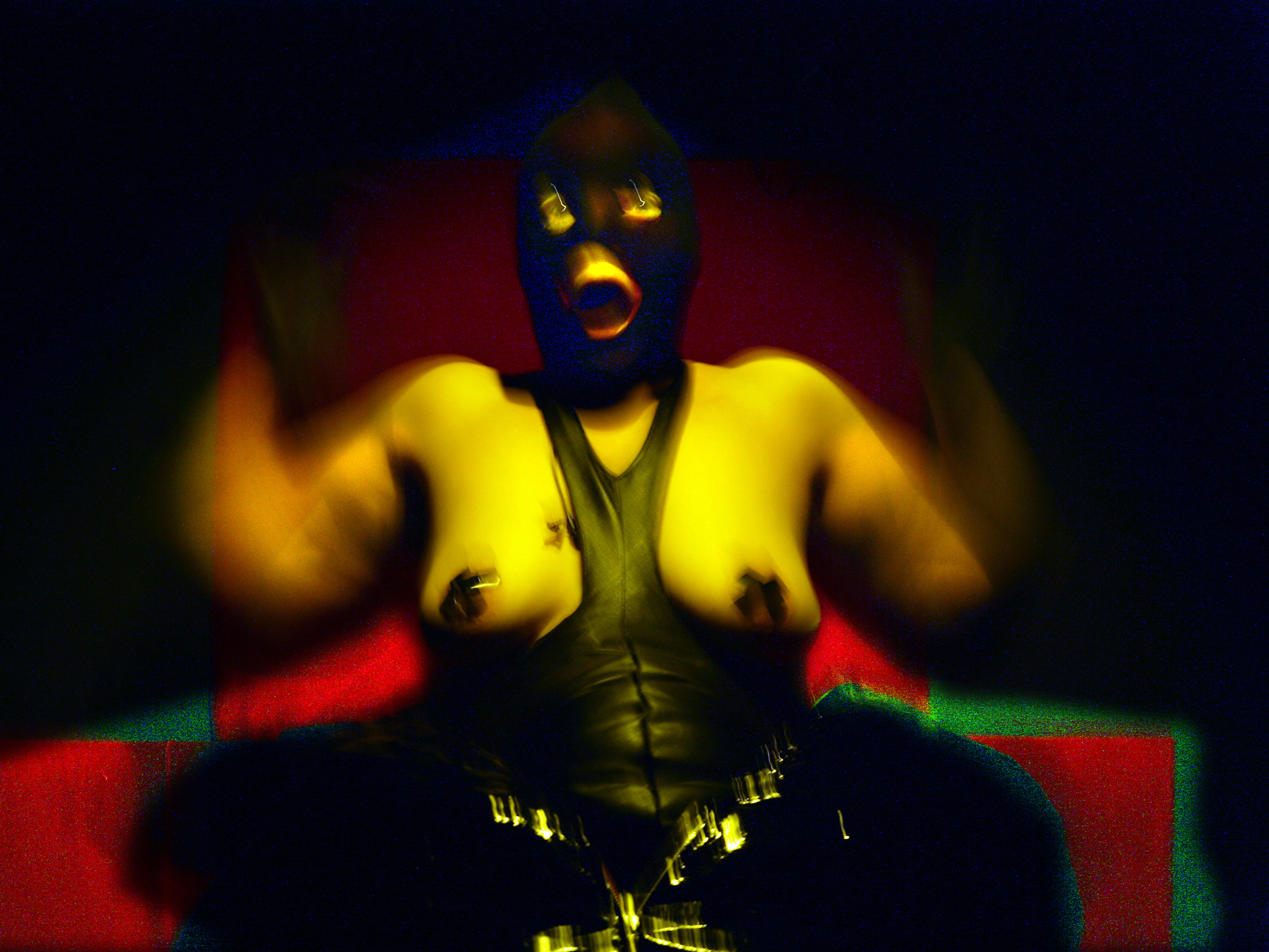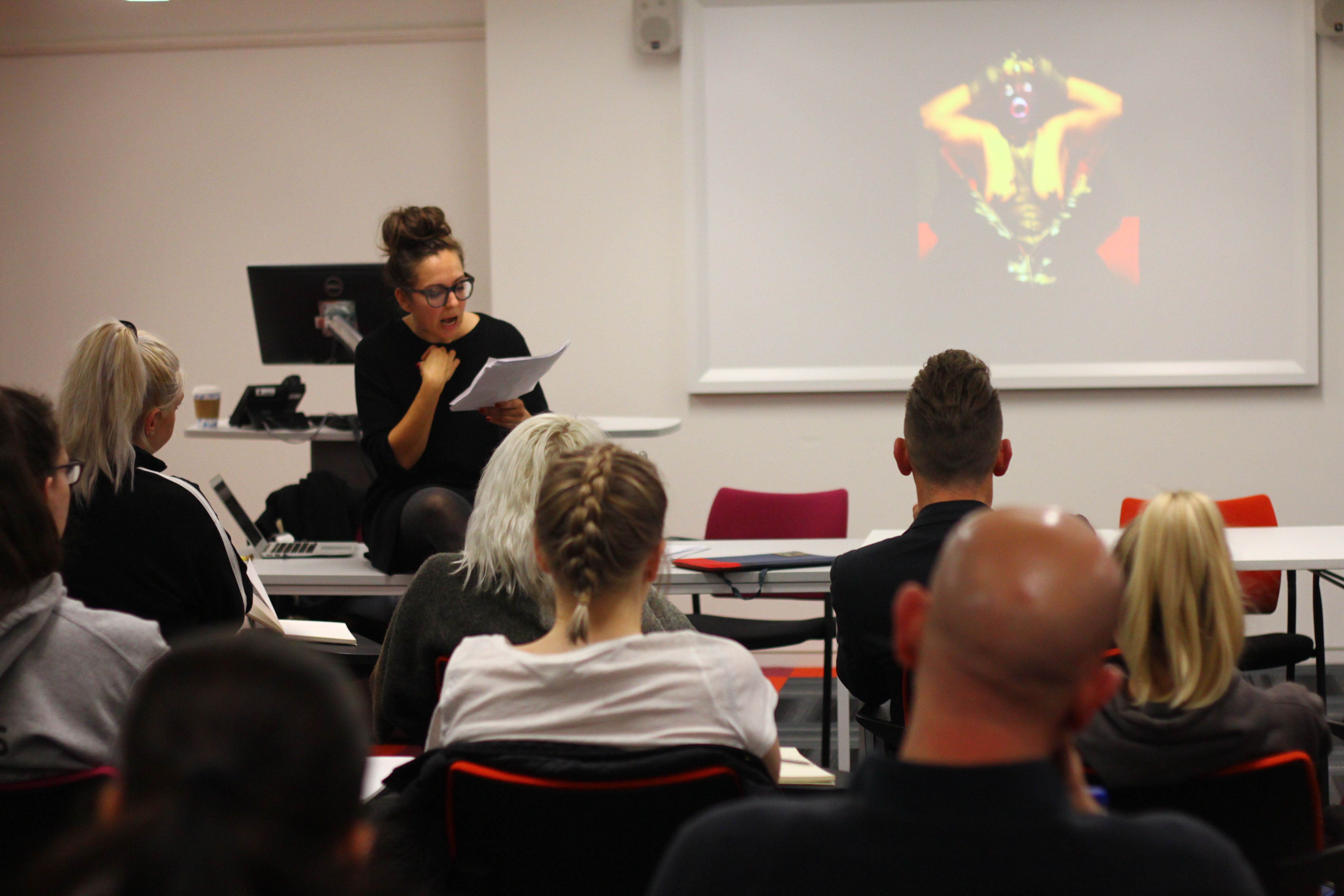Rehearsals of the Weird
How do we discuss difficult work that evades us? What is it about specific performance imagery that seems so hard to pin down? How could we respond to theatre work that demands its own vocabulary?
In this article, I seek to explore the performance work of British visual and theatre artist Julia Bardsley, whose theatrical spectacles, fantastical personae and fictional worlds resist being known, even as they speak to us intimately and directly.
I am proposing a re-purposed critical language drawing from literary studies, film and science fiction to address such difficult work and consider conceptual frameworks such as the weird, the monstrous, the perverse and the wild. These become tools with which not only to read the work but also to understand something of its making.
In this article, I seek to explore the performance work of British visual and theatre artist Julia Bardsley, whose theatrical spectacles, fantastical personae and fictional worlds resist being known, even as they speak to us intimately and directly.
I am proposing a re-purposed critical language drawing from literary studies, film and science fiction to address such difficult work and consider conceptual frameworks such as the weird, the monstrous, the perverse and the wild. These become tools with which not only to read the work but also to understand something of its making.




PHOTO 1-3 BY SIMON ANNAND, 4 BY FENIA KOTSOPOULOU
Julia Bardsley appears wearing a glistening black PVC body bag, which covers the entirety of her body and head.1 It slowly unzips to reveal a strange creature, whose face is covered with a black balaclava, eyes and mouth exposed, holes framed, features accentuated The creature wears a black leather wrestling singlet that leaves the breasts exposed either side, with her nipples covered in black tape crosses; the suit is modified to accommodate what looks like a pregnant belly. A horizontal caesarean incision opens up and the figure pulls out two unmoving, dead animals: two taxidermied hares that seem limp, soft and hollow. What I encounter as the feral mother seems to be giving birth to the animals in a way that feels triumphant, with no agony at all. She lifts them up by the legs, the twin hares, and opens her mouth, her tongue protruding. These limp newborns are already dead, un-living.
British visual and theatre artist Julia Bardsley makes performance work comprising of highly theatrical spectacles, strange garments and objects, usually surrounding a fantastical persona. Her work is not deliberately created as weird, but rather may be perceived as such. Before the nineteenth century the weird was connected to faith, while it was only after that it gained the meaning of strange or odd. The weird cannot be understood without considering normality and what that might be, as it implies a break with it, a possibility for what lies beyond the normal, a sense that perhaps there is something not quite fitting with normality and potentially an aspiration for something novel emerging from such a break. Weirdness for certain artists, for instance, denotes a space for experimentation, where one can take risks and place oneself in opposition to the mainstream. For others, such as Bardsley, making this work is a way of navigating the world’s insanity today and of staging an uncompromising celebration of the extraordinary complexity of human subjects.
I examine the weird as a place for a reformation of desire and a rethinking of norms. It is a space that accommodates what lies beyond the familiar, a desire, which exceeds the parameters of the ordinary, which in my under- standing consists in normative life narratives that are concerned with notions of stability, longevity, and permanence achieved through institutions such as family, heteronormativity, and reproduction.2 My own interest in exceeding normative life narratives lies in my struggle to articulate my desire not to have children and the complex emotions that accompany the resistance to the compulsory narrative of a reproductive futurity. The weird, as discussed in this writing, is a type of aesthetic experience or affect that operates on a frequency, rather than within language; it is a concept that is not subsumed into the normalising capitalist project, which uses individuality and encourages excessive performances of identity as a platform for data collection (especially through social media) and economic profit or corporate endorsement of marginality (with the example of Gay Pride, amongst others). The weird, as conceptualised by this article is a space of critical potential for reading and making theatre work as well as a critical trope for articulating what lies beyond normative understandings of sexuality, identity, and desire. The weird reconsiders the terms, names, and categories with which we understand our desires, bodies, sexualities and opens up a space in which we may not yet be able to articulate some of our longings. Companies such as Socìetas Raffaello Sanzio, Kinkaleri or artists Julia Bardsley, La Ribot, and Ron Athey, amongst others, use difficult images that resist naming and being known even when talking to us intimately and directly. Performance scholars Joe Kelleher, Nicholas Ridout, Adrian Heathfield, Dominic Johnson, and Amelia Jones, to name a few, have accounted for such work by closely tracing its promise, affects, experiences of time and spectatorship. In their book The Theatre of Socìetas Raffaello Sanzio, Kelleher and Ridout quote Romeo Castellucci: ‘I believe that today theatrical experience is founded on the intimate experience of each spectator [...] contemporary theatre has become an experience of sensitive awareness. Awareness in the sense of an opening, awareness of what opens up’.3
3. Cited in Nicholas Ridout and Joe Kelleher, The Theatre of Socìetas Raffaello Sanzio (London: Routledge, 2007), 4.
British visual and theatre artist Julia Bardsley makes performance work comprising of highly theatrical spectacles, strange garments and objects, usually surrounding a fantastical persona. Her work is not deliberately created as weird, but rather may be perceived as such. Before the nineteenth century the weird was connected to faith, while it was only after that it gained the meaning of strange or odd. The weird cannot be understood without considering normality and what that might be, as it implies a break with it, a possibility for what lies beyond the normal, a sense that perhaps there is something not quite fitting with normality and potentially an aspiration for something novel emerging from such a break. Weirdness for certain artists, for instance, denotes a space for experimentation, where one can take risks and place oneself in opposition to the mainstream. For others, such as Bardsley, making this work is a way of navigating the world’s insanity today and of staging an uncompromising celebration of the extraordinary complexity of human subjects.
I examine the weird as a place for a reformation of desire and a rethinking of norms. It is a space that accommodates what lies beyond the familiar, a desire, which exceeds the parameters of the ordinary, which in my under- standing consists in normative life narratives that are concerned with notions of stability, longevity, and permanence achieved through institutions such as family, heteronormativity, and reproduction.2 My own interest in exceeding normative life narratives lies in my struggle to articulate my desire not to have children and the complex emotions that accompany the resistance to the compulsory narrative of a reproductive futurity. The weird, as discussed in this writing, is a type of aesthetic experience or affect that operates on a frequency, rather than within language; it is a concept that is not subsumed into the normalising capitalist project, which uses individuality and encourages excessive performances of identity as a platform for data collection (especially through social media) and economic profit or corporate endorsement of marginality (with the example of Gay Pride, amongst others). The weird, as conceptualised by this article is a space of critical potential for reading and making theatre work as well as a critical trope for articulating what lies beyond normative understandings of sexuality, identity, and desire. The weird reconsiders the terms, names, and categories with which we understand our desires, bodies, sexualities and opens up a space in which we may not yet be able to articulate some of our longings. Companies such as Socìetas Raffaello Sanzio, Kinkaleri or artists Julia Bardsley, La Ribot, and Ron Athey, amongst others, use difficult images that resist naming and being known even when talking to us intimately and directly. Performance scholars Joe Kelleher, Nicholas Ridout, Adrian Heathfield, Dominic Johnson, and Amelia Jones, to name a few, have accounted for such work by closely tracing its promise, affects, experiences of time and spectatorship. In their book The Theatre of Socìetas Raffaello Sanzio, Kelleher and Ridout quote Romeo Castellucci: ‘I believe that today theatrical experience is founded on the intimate experience of each spectator [...] contemporary theatre has become an experience of sensitive awareness. Awareness in the sense of an opening, awareness of what opens up’.3
3. Cited in Nicholas Ridout and Joe Kelleher, The Theatre of Socìetas Raffaello Sanzio (London: Routledge, 2007), 4.
